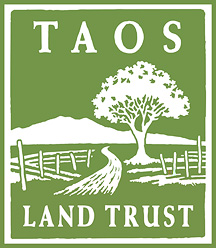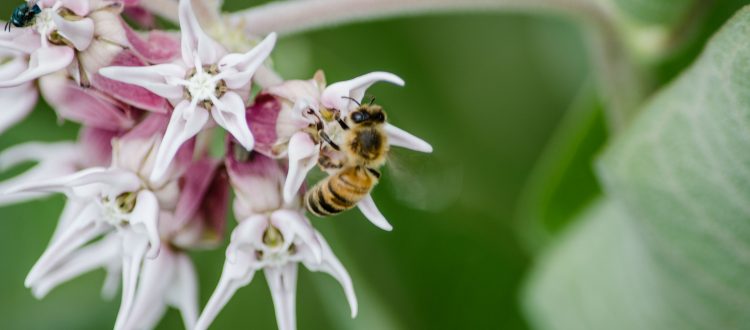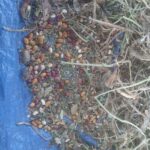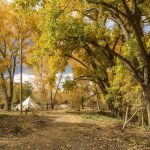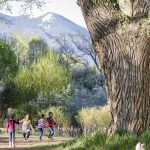Whats the Buzzzzzzz on the Bees? Find out Sunday August 5, 2018 at Rio Fernando Park!
What’s the buzz on bees?
They’re anything but boring! When most people think of bees they picture fluffy, black and yellow insects making honey, but there’s more to pollinators than just honeybees. Native bees make up the vast majority of bees, with 4,000 species in the US and Canada alone. To put that in perspective, that’s four times as many bird species, six times as many butterfly species, and ten times as many mammal species as exist in those two countries. And they’re not just black and yellow fuzzballs, either. Bees come in myriad colors including jeweled shades of red, green, blue, and even solid black – and some have very little fuzz.
Like humans, bees have varying lifestyles. Generalist bees don’t give a buzz about which type of flowers they visit, loyalist bees prefer certain flowers at certain times, and specialist bees visit only one flowering plant species. Nocturnal bees gather pollen under the moonlight, while some daytime bees cluster at night together to sleep in a single blossom. There are even bees that eat meat rather than pollen. Honeybees and bumblebees, live in hives, yet 99% of bees are solitary, nesting in the ground, chunks of rotting wood, rock walls, bundles of twigs, or even in human-made homes
Yet they are ALL are beautiful, interesting creatures.

Bees thrive nearly everywhere, but are most abundant in hot, dry environments like the desert US southwest. New Mexico has over 400 species of native bees, making it one of the best places to study them. Interestingly, New Mexico is also home to the smallest North American bee, the Perdita, as well as the enormous carpenter bee, which noisily helicopters its way around your garden. Your backyard alone must contain dozens of species!
So why are bees important? Because without them we could, quite literally, starve. Bees are thought to increase seed setting in over 70% of flowering plants, including the vast majority of the fruits and vegetables. They’re particularly essential to the pollination of “power foods” which provide vital nutrients such as potassium, folic acid, and vitamins A, C, K, and E. But it’s not just fruits and vegetables. Bees pollinate alfalfa for cattle, as well as nuts and spices. Bees also pollinate coffee plants, so whether you drink your latte with almond milk (almonds are pollinated by bees) or cow milk (none of that without alfalfa) your morning beverage would be no more than a cup of hot water. Without bees, Thanksgiving dinner might be nothing but turkey, for squash, green beans, and cranberries all depend on bees. Even your fashion would be affected – bees pollinate cotton!
Sadly, bees are in danger. Though there’s much evidence supporting the decline in honeybee populations, bumblebees and native bee populations may be declining, too. Contributing to this decline are monoculture crops (pushing out wildflowers and bee-friendly plants), pesticides, impervious surfaces (roads and pavement), and even non-native pathogens. But there are ways we can help bees prosper, including creating a safe environment stocked with plants they enjoy and building them homes. So let’s learn how!

It’s time to think outside the hive! Want to learn more about these fascinating creatures and help them thrive? Please join us on Sunday, August 5th at Rio Fernando Park from 2:00 pm to 5:00 pm for an afternoon of bee exploration. This event will be led by Olivia Messenger Carril, co-author of Bees in Your Backyard: A Guide to North American Bees. Olivia has studied native bees for over 20 years. She completed a Master’s Degree in 2006 at Utah State University, establishing a long term ecological study of the environmental factors influencing bee diversity in Grand Staircase-Escalante National Monument. In 2013, she received her PhD from Southern Illinois University Carbondale, studying a specialist bee and its host flowers.
Olivia loves telling people about bees. She’ll begin with a fascinating overview of New Mexico bees, including those most commonly seen here this time of year. You’ll learn how to identify bees and the roles they play in the ecosystem. This will be followed by a bee walk to see and collect bee specimens. Vials and some nets will be provided, but if you have an insect net of your own, please feel free to bring it. Finally, we’ll be making “bee hotels,” homes for native bees. Some materials will be provided but please feel free to bring your own supplies including straws, sticks, glue, string and coffee cans.
For questions or to RSVP about supplies, please call or email Michelle at 575.751.3138 or michelle@taoslandtrust.org.
